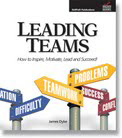Pitfall #2: Lacking a consistent approach to performance management and career development

— Image by © Royalty-Free/Corbis
Google puts it this way:
They don’t help employees understand how these work at Google and they don’t coach them on their options to develop and stretch.
The sad truth is that many organizations employ vague and subjective performance measures in their formal (usually annual) performance reviews. Even worse, employees are often rated on a five-point scale in a company culture with a tacit rule – “we don’t give out fives.”
Performance is an area that requires crystal clear clarity—for both managers and employees.
Performance Standards Must Be Crystal CLEAR
A consistent performance management approach requires clear, measurable descriptions for each level of performance in each category of performance. In other words, employees need to know exactly what a “5” level of performance looks like in any given category. The descriptions should be so clear that the employee will be able to know for certain what their performance level is, even without input from the boss.
Furthermore, clarity in one’s current performance is essential for any reasonable process of professional (career) development—before you “stretch” you first have to be succeeding at your current level. That’s why it’s vital to have clarity about where you are right now in your performance.
Start with These Key Questions…
So…Employees in any organization need clear answers to these performance questions:
- How well am I expected to perform?
- How will my performance be measured?
- How will my good performance be rewarded?
- How will my bad performance be addressed?
- What opportunities for professional development are available to me?
Help Your Team Members Move Forward
Organizations take different approaches to professional development, but these are common ways many managers use to help their employees “stretch” …
- By providing a higher level of authority/responsibility in current assignments (read my July 23rd post for some help with this)
- Introducing new areas of technical skill, with opportunity for supportive training (e.g. presentation and public speaking; project management; business writing)
- Giving assignments that introduce tasks associated with managerial level work (e.g. budgeting; hiring; planning);
- Giving cross-functional assignments that put the employee in contact with leaders from other departments (e.g. planning committees; policy-making groups; leadership training classes)
Put It On YOUR To-Do List
The key here is simple: Effective managers take the initiative with regard to their team members’ professional growth and development. They don’t wait for the employee to make the first move. Managers who don’t pursue this with their team members typically see less employee development as a result. Google researchers saw this lack of commitment as a problem that was so common, it deserved special mention. They cautioned leaders to avoid this error of low-performing managers, about whom they said:
They’re not proactive—they wait for the employee to come to them.
In my blog post on Google’s Rules #6, I gave the example of Tony Knight. I explained the simple way he took initiative to help his team members with their career development. Be sure to read it and also download the special resource I referred to in the article—The Top Ten Habits of Highly Likeable People.
And if you would like help with your career and professional development, give us a call—our executive coaching services can turbocharge your learning and growth!
Until next time—yours for better leaders and better organizations,
Dr. Jim Dyke – “The Boss Doctor” ™ – Helping you to be a better boss and to have a better boss!


